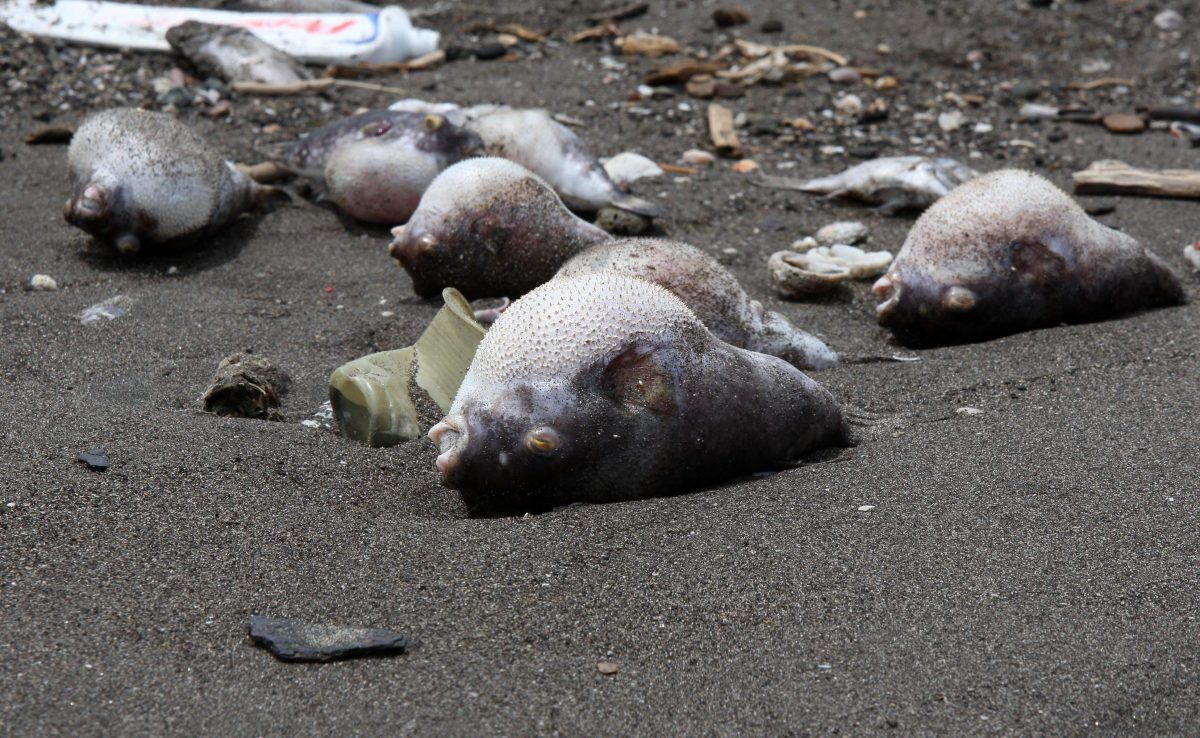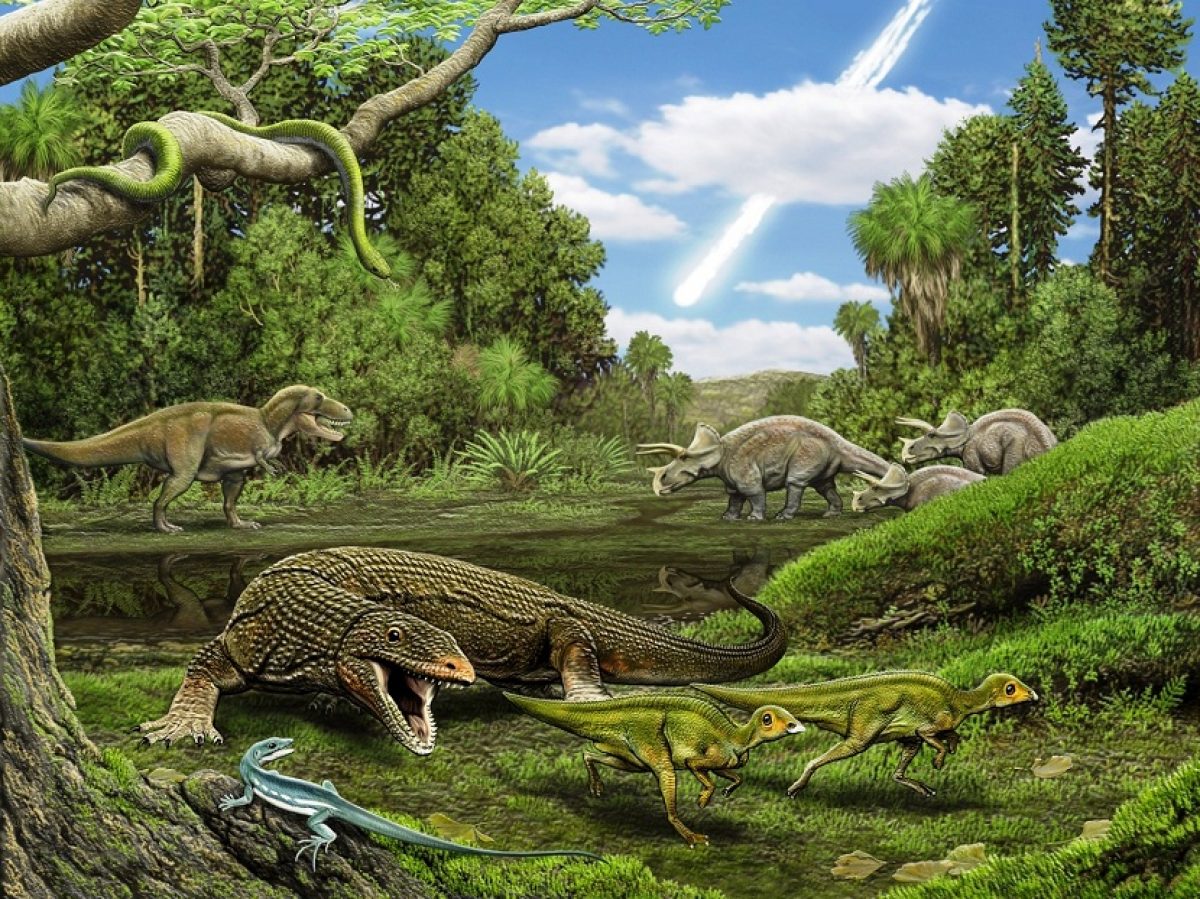
Within the Paleozoic era there are 6 periods in which geological time is divided. During the Permian period, located between the carboniferous and Triassic life unfolded with great changes. The Permian fauna it had as its protagonist the first sketch of mammals as well as the diversification and expansion of other living beings that already existed. The Permian period lasted approximately 48 million years and was considered a time of transition for the planet both at a geological and climatic level.
In this article we are going to tell you about the characteristics and evolution of the Permian fauna.
Permian period

There are many specialists who repeatedly investigate this period since a large amount of valuable information can be obtained. Especially at the end of the Permian it is of scientific interest since it was presented the most catastrophic and devastating mass extinction event on the entire planet. This process of mass extinction was more important than the extinction of the dinosaurs in the cretaceous.
The period of extinction became known as "the Great Dying" and in it More than 90% of all species of living beings have disappeared. Only a few species survived which gave way to other more famous animals in the history of the earth such as dinosaurs. The total duration of the Permian is estimated at 48 million years, beginning 299 million years ago and ending 251 million years ago.
During this period of time the weather was quite variable. Both at the beginning and at the end of this period, glaciations were experienced and the climate in its intermediate phase was quite warm and humid.
The Great Dying in the Permian fauna

During this period some species of animals came to experience great diversification. In this case, we find a great evolution in reptiles that were considered as mammals. And it is that in some fossil records the ancestors of current mammals could be found. That is to say, current mammals come from the reptile.
With respect to the Great Dying constituted one of the most important mass extinction events on the entire planet. It occurred throughout this period already at its end almost at the beginning of the Triassic period. It is the most devastating extinction process the entire planet has ever gone through. And it is that 90% of the species of living beings that populated the planet became extinct. The causes of this mass extinction are not fully known, but there are some theories that try to postulate what happened.
Among the theories most affected is that of a intense volcanic activity that caused the expulsion of large amounts of carbon dioxide into the atmosphere. As we know, this carbon dioxide is a greenhouse gas with the ability to retain heat. The large amount of carbon dioxide released into the atmosphere caused an increase in the average environmental temperature. This is how it caused atmospheric instability at a global level and many living beings could not adapt to environmental conditions.
Another proposal is the cause of the release of hydrocarbons from the ocean floor and the impact of a meteorite. Whatever the cause of it, it is a very catastrophic event that greatly affected all the environmental conditions that existed on the planet at that time.
Permian fauna

During this period, some species of animals that originated in previous periods were kept. However, an important group of new animals such as were the mammalian reptiles. These animals are considered ancestors of current mammals. A very diverse life was found in the seas.
invertebrates
Among the invertebrates that stand out from the Permian fauna, some marine groups such as echinoderms and mollusks are mentioned. Thanks to various scientific studies, it has been possible to find fossil records of bivalves and gastropods, as well as some brachiopods. Within this group and marine ecosystems, the members of the poriferous edge where the sponges are found stand out. These animals were the ones that originated most of the barrier reefs.
Despite the fact that most of these animals became extinct, a fossil record has been found in which more than 4 thousand species have been distinguished. Its distinctive feature was that these animals were protected by a cover of calcareous material. On the other hand, arthropods, especially insects, had a good development as in previous periods. At this time it should be noted that the size of the insects was somewhat more significant than today. In this group of animals, several new orders appeared, such as the Diptera and the Coleoptera.
Vertebrates
Moving on to studying the vertebrates, we see that they also underwent a great expansion and diversification, both in terrestrial and aquatic ecosystems. Fish were the most representative animals of this period. Here we find chondrichthyans as are sharks and bony fish. One of the sharks that became extinct during the Cretaceous period was already living at this time. Sharks at that time were very similar to today's sharks, although not large. They could only reach 2 meters in length.
We also see the Orthacanthus. It is a type of fish that is now extinct. It belongs to the group of sharks and its appearance was quite different. The body resembled that of an eel and had various types of teeth. We also have amphibians. These animals underwent development. They were a fairly diverse group and could range from a few centimeters to 10 meters.
Finally, we see that reptiles were the animals that presented the greatest diversification. Among these reptiles we find therapsids, which were a group of mammals considered as the ancestors of today's mammals. Among their distinctive characteristics, we found that they presented several types of teeth and each one was adapted to different functions. In addition, they had 4 limbs or legs and their diet was varied. There were both carnivorous and herbivorous species.
I hope that with this information you can learn more about the Permian fauna